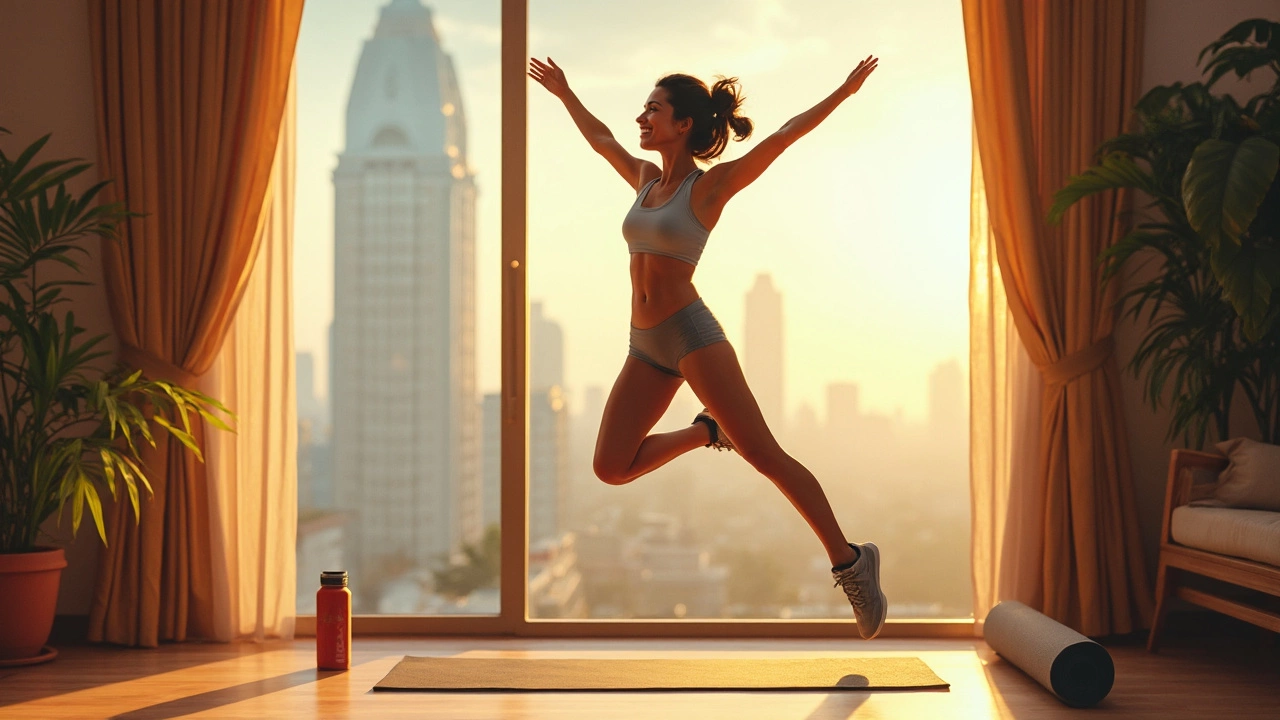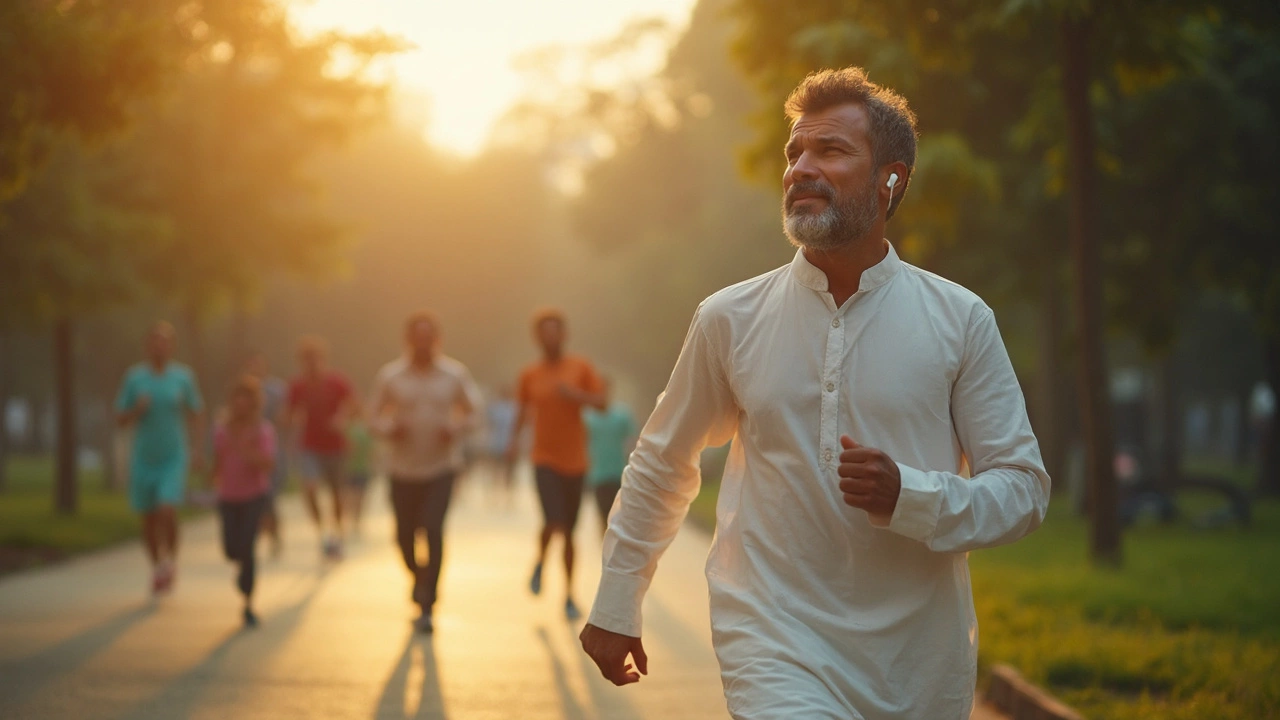Is Any Workout Better Than No Workout? The Truth About Fitness Shortcuts
 Jun, 26 2025
Jun, 26 2025
You know that little voice in your head that says, “Don’t bother if you can’t do it perfectly”? It’s the same voice that makes you skip a ten-minute walk just because you couldn’t fit in a full hour at the gym. Here’s the wild bit: study after study shows that doing something—even the smallest something—is leaps and bounds better than doing nothing at all. Stuck in a chair all day and forgot your gym bag? Even standing up and moving for two minutes can trigger real physical benefits. Most people overthink fitness, picturing sweaty, grueling hours with complicated routines. The truth? Your body loves any movement you’ll give it, and every little bit adds up—no matter how short, awkward, or unplanned.
What the Science Says: Even Small Movement Matters
Imagine hundreds of scientists basically saying, “Just move, already!” That’s what happened when the World Health Organization and the CDC updated their physical activity guidelines. They dropped the old rule about exercise coming in 10-minute or longer “batches.” Instead, they now say everything counts—every single bit. A one-minute set of squats, a walk to the mailbox, dancing to your favorite song, or a set of pushups before bed. Research published in JAMA Internal Medicine in late 2022 followed thousands of adults for years and found that people who squeezed in brief bouts of “vigorous intermittent lifestyle physical activity”—like running to catch a bus—had a 40% lower risk of early death, even if that was their only exercise.
Another clinical study tracked office workers who swapped just two minutes of walking each hour for sitting. After adjusting for age, diet, and all the complicated stuff, they saw an average of 33% lower risk of dying early—just from those tiny, regular movement breaks. Is any workout better than no workout? The proof is right there in the numbers, and the numbers just keep stacking up. Sitting is, quite literally, the new smoking. Stand up once an hour. Stretch. Walk around. Even that counts and sends big health signals to your muscles, heart, and brain.
| Action | Minutes Spent | Heart Rate Increase (%) | Long-Term Health Risk Reduction |
|---|---|---|---|
| Light walking | 5 | 12% | 22% lower diabetes risk |
| Stairs (slow pace) | 2 | 16% | 19% lower heart disease risk |
| Squats or sit-to-stands | 1 | 20% | Up to 30% lower fall risk (for older adults) |
Neuroscientists have also caught on that brain health ties right into physical movement. A 2023 study from the University of California tracked moods and memory boosts following as little as three minutes of movement. The brain’s happy chemicals—dopamine, serotonin, endorphins—spiked, sometimes for hours. If you’ve ever noticed that a brisk walk made you see a problem differently, you’re not imagining it.
Let’s not gloss over the science about metabolism, either. Even mini-workouts kickstart processes like glucose regulation and fat burning. Dr. Stuart Phillips, a professor at McMaster University, led research showing that as little as two minutes of bodyweight squats can temporarily boost metabolism, and sprinkling short workouts across the day gets you almost as much metabolic benefit as a single long session.

Small Steps Add Up: How to Make Micro-Workouts Work for You
Here’s a secret: fitness isn’t about grand gestures. It’s about stacking tiny wins. If the idea of a full workout leaves you cold, just look for “movement snacks.” What does that mean in real life? Drop and do ten pushups while your coffee brews. Dance—yes, full-body, goofy dancing in the kitchen—while your pasta cooks. Take the long route to the bathroom at work. If you’ve got little kids, crawl on the floor and turn it into a game. These “snacks” are your easiest ticket to building a habit.
A lot of people get tripped up by the idea that only structured, super-sweaty routines count. Think about how fast your heart beats after one flight of stairs or a playful sprint with your dog. That’s the stuff that moves the needle. Fitness researchers found that when people with busy schedules swapped just three or four minutes of all-out effort—like running on the spot, burpees, or jumping jacks—three times a day, their VO2 max (a fancy word for heart and lung capacity) improved nearly as much as people who logged 45-minute workouts. The trick is to make movement as automatic as brushing your teeth: too small to skip, too easy to overthink.
- Use TV ad breaks for squats or lunges
- March in place while brushing your teeth
- Stretch before bed—touch your toes, then your sofa
- Pace when you’re on the phone instead of sitting still
- Always take the stairs, even if it’s just one flight
- Keep a resistance band by your desk for quick pulls
Technology doesn’t have to make us lazy—it can be a nudge! Set hourly “move” reminders on your phone. Track your steps (aim for extra, not perfection). Join friends or family in silly daily challenges, like jumping jacks before breakfast. The goal isn’t to be elite tomorrow, just a little more active today than yesterday.

More Than Muscles: How Movement Impacts Mindset, Sleep, and Stress
If you only see exercise as torture for burned calories, you miss the coolest parts. Those tiny spurts of movement? They don’t just make you fitter. They change how you feel and function in ways most people never expect. When life is stressful, it’s weirdly easy to freeze up and sit still for hours—just staring at your screen, feeling drained. But get your body moving, even a tiny bit, and stress starts to melt. Researchers at Harvard found that people who took several short “active breaks”—just walking around a block or stretching—were 50% less likely to report feeling overwhelmed or burnt out after a week.
Not getting solid sleep? Movement helps here too. The Sleep Foundation shared data showing people who exercised for even five minutes during the day fell asleep faster and woke up less at night. And you know that foggy-headed feeling you get after a long, slouchy day? That vanishes when movement sneaks into your routine. Attention, memory, even creative thinking—they all get a lift. Brain imaging studies reveal that after a burst of movement, areas involved in decision-making and focus light up more.
Here’s a real-life trick: if you can’t find time for a workout, use your commute. Park at the far end of the lot. Get off the bus one stop early. Or—my personal favorite—make deals with yourself: "If I get up to make a coffee, I have to stretch while it brews." Over time, these little rituals build into real habits. You’ll notice yourself feeling more alert, less antsy, and even happier. Movement changes brain chemistry and reshapes how you deal with tough days.
Don’t underestimate the social bonus either. Walk with a colleague instead of sitting for meetings. Invite a friend for a “walk and talk” check-in instead of grabbing another coffee. Motivation is contagious. When people see their friends squeezing in even tiny workouts, they feel less pressure to be “perfect” and more permission to just try.
So if there’s one thing you take away, it’s that every bit of movement matters—a lot more than you might think. Quit holding out for the perfect routine. Every second you move, you’re rewiring body and brain for better health. Small steps? They make a massive difference. Why wait?
